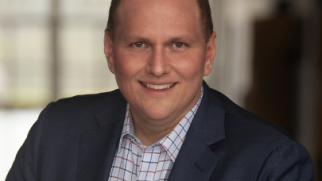President and CEO Dan Klein’s wish list for 2018

The New Year is a great time to think about resolutions and goals. The following are goals I would like to see accomplished in our country this year.
1. For people with serious illnesses to be able to focus on improving their health and quality of life, without having to worry about how to pay for their treatment.
While the passage of the Affordable Care Act enabled major strides in increasing the number of insured Americans, the number of “underinsured” Americans—those who have health insurance but cannot afford the out-of-pocket costs related to their deductibles, coinsurance or co-pays—continues to soar. According to a 2017 Commonwealth Fund study, 28% of working-age adults in the United States who had health insurance all year were underinsured in 2016, up from 23% in 2014. More than half of the underinsured (52%) had medical bill problems and 45% went without needed health care because of cost.
2. For Medicare and commercial insurance plans to limit premiums and out-of-pocket costs for people with serious illnesses to what they could afford.
A key reason people face high out-of-pockets costs relates to the design of insurance benefit plans. Medicare Part D beneficiaries pay an initial deductible of up to $405. The Initial Coverage Phase requires them to pay up to $3,750 of medication costs. Once Medicare Part D beneficiaries enter the coverage gap, commonly known as the “donut hole,” they are responsible for a larger share of their total drug costs, up to $5,000. Thereafter, in the catastrophic coverage phase, they pay 5% of drug costs, with no cap. Not to mention, many specialty medications are placed on the highest specialty tiers in a plan, which have the highest co-pays and coinsurance rates. And all these costs multiply for patients living with numerous health conditions. To say reform is needed is an understatement. It’s time to put a “hard cap” on out-of-pocket costs once beneficiaries reach Medicare Part D’s catastrophic threshold.
3. For no one in the United States to have to choose between paying for food, clothing or shelter and getting the health care they need.
Can you imagine skipping meals, defaulting on your mortgage, or only taking half of the required dose of your critical medication because the costs of your health care treatment are insurmountable? Unfortunately, this is a reality for thousands of middle-class Americans living with life-threatening, chronic and rare diseases, who have health insurance and fall within 400% and 500% of the Federal Poverty Level. These people are forced to make impossible financial choices in order to survive. The overwhelming majority of them—about 90%—are Medicare beneficiaries. Charitable patient assistance foundations like the Patient Access Network Foundation are the only place Medicare beneficiaries can turn for financial assistance related to their prescription medications.
4. For policy makers and drug manufacturers to work together to make sure that critical medications are affordable for individuals and for the overall economy.
In the debate about how to tackle underinsurance and patients’ high out-of-pocket costs for medical treatment, there is a tendency among lawmakers and the media to point fingers at the drug companies. But the reality is that this is a complex issue that requires a comprehensive strategy with multiple stakeholders at the table. We need policy makers to attack the issue of underinsurance from all sides. That means in addition to focusing on ways to lower drug prices, developing policies that reduce patients’ out-of-pockets costs and improve their access to critical medications and treatment.
5. For all people to have access to the health care they need at a price they can afford.
Most CEOs would never say that their goal is for the organization they lead to no longer be needed, but that’s something I wish for every day. According to a recent survey conducted by the PAN Foundation of people living with life-threatening, chronic or rare diseases, nearly four out of 10 individuals could not afford the out-of-pocket costs associated with their prescription medications. Our hope is that in the not so distant future, that number will be zero. In the meantime, patient assistance programs will continue to play an essential role in ensuring that hundreds of thousands of patients get the care they need.
Was this helpful?
